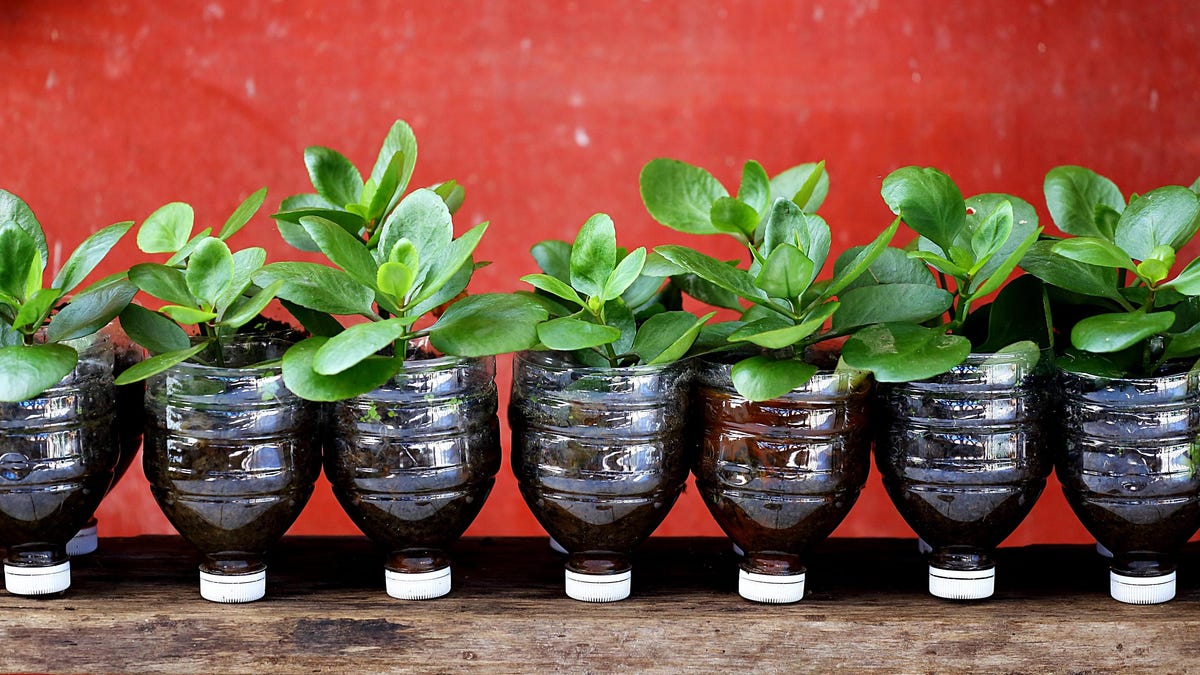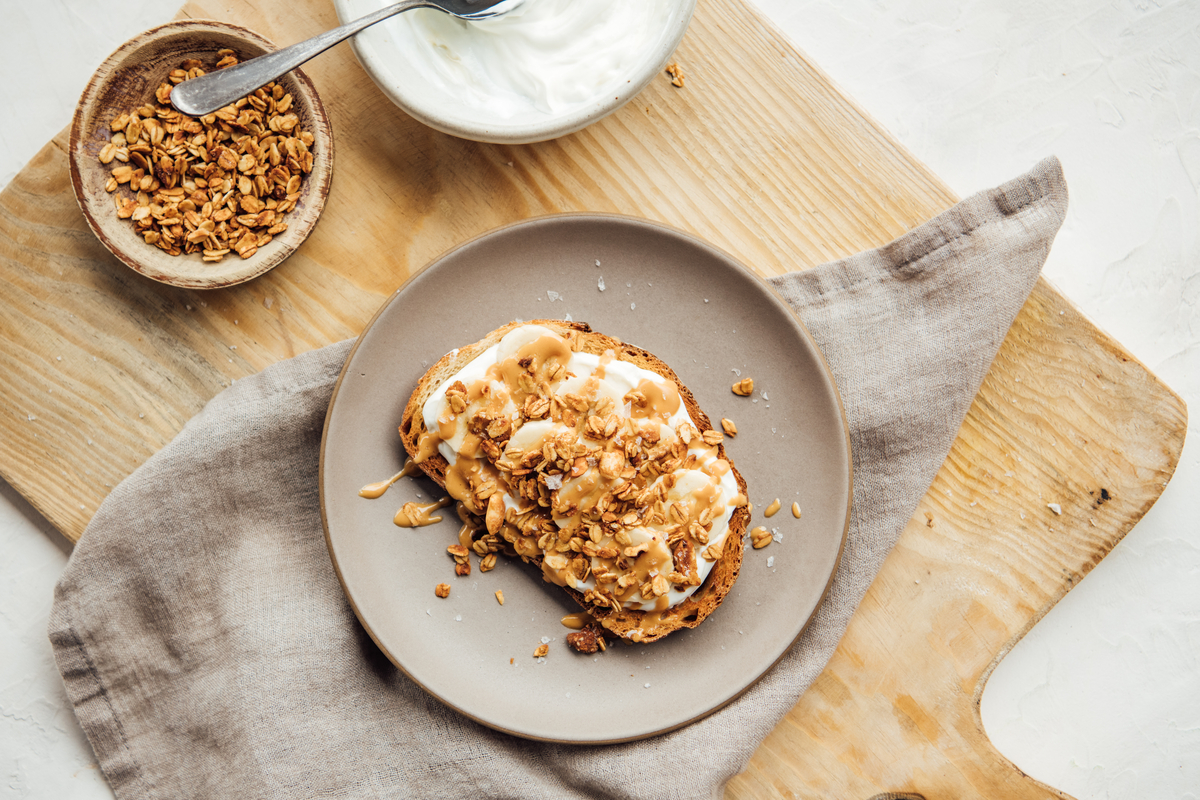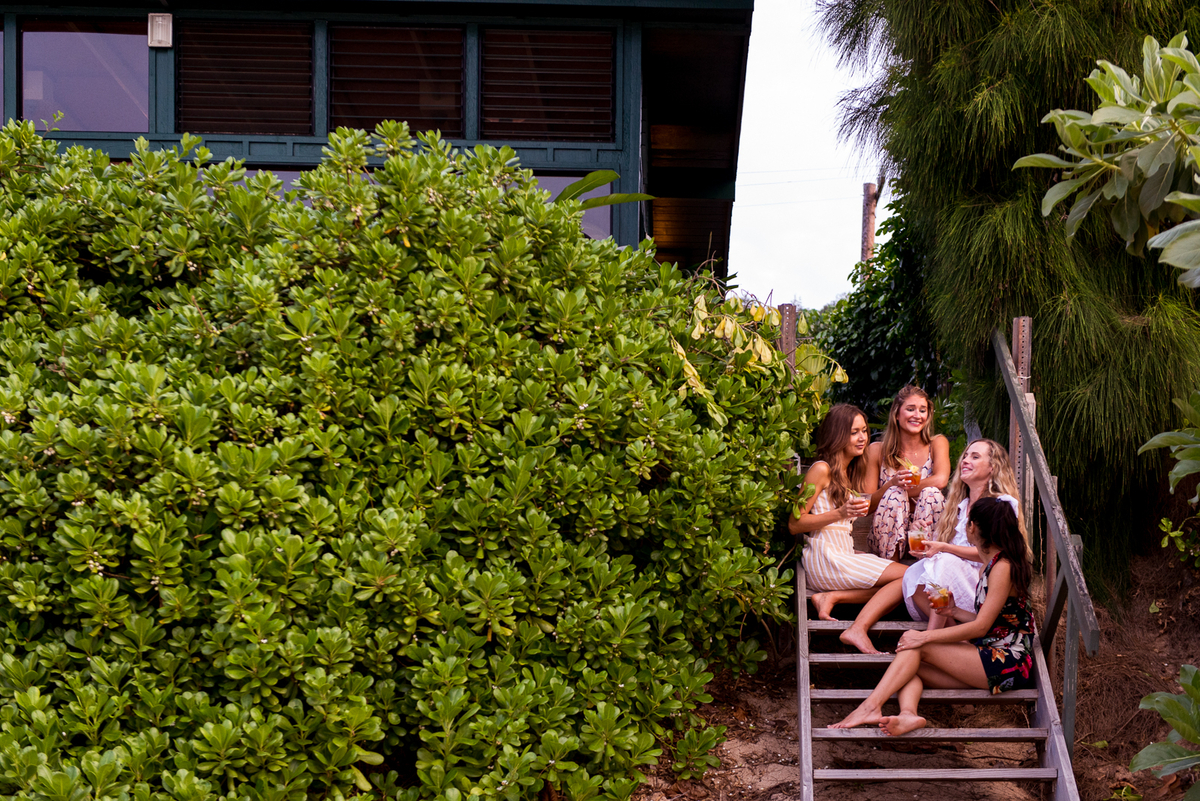Charbroil Buttery, Garlicky Oysters Over Your Charcoal Chimney
Oysters are like grapes: The best ones come from rough homes. A grape from a warm, comfortable climate is fat and happy but watery and bland, and I’ve found the same to be true of everyone’s favorite slippery bivalve....

Oysters are like grapes: The best ones come from rough homes. A grape from a warm, comfortable climate is fat and happy but watery and bland, and I’ve found the same to be true of everyone’s favorite slippery bivalve. Coming from Mississippi, the first oysters I tasted were huge specimens that hailed from the balmy gulf of Mexico. I did not care for them raw, but then I had them charbroiled.
A charbroiled oyster, most famously made by Drago’s in New Orleans (and Jackson, Miss.) is one of my favorite bites in the entire world. My dad calls them “the best thing he ever ate” and insists we pair them with a crisp, cold glass of chardonnay, because he is wise. A mixture of butter, garlic, and cheese is spooned over freshly-shucked oysters, which are then blasted to hell on a super hot charcoal grill. The briny liquid makes its way out of the oyster and mixes with the melted butter, then quickly reduces down to create a concentrated, umami-packed sauce further heightened by the addition of garlic and a little cheese. The oyster itself benefits from the loss of water, which renders it a little meatier and more flavorful.
These oysters are excessive, but not excessively difficult to make, as long as you bring the fire. A blast of heat is key, and something that’s hard to replicate at home. While a standard Weber Kettle can get pretty hot, it takes a large amount of charcoal to fill the even half of the surface area of the grill with enough intense heat to properly char the bivalves. Instead of blowing a week’s worth of coal on a single meal, you can use your charcoal chimney to create a veritable tunnel of fire.
Get your grill hot hot hot with these tools:
Our favorite charcoal chimneyEasy-to-use lighter cubesAn external thermometer, so you always know how hot your grill really isUsing a charcoal chimney, as you probably know, is the easiest way to heat up a bunch of charcoal. Fill it with coals and place a lighter cube underneath it, and within 20-30 minutes, you’ll have a tube glowing, ashed over coal. Normally, one would dump those coals onto their coal grate—sometimes with additional coals—and grill as usual, but leave the coals in the chimney and you can harness the concentrated blast of heat coming out the metal tube. (Meathead Goldwyn uses his chimney to get a great sear on steaks, which is what gave me the idea to try it with oysters.)
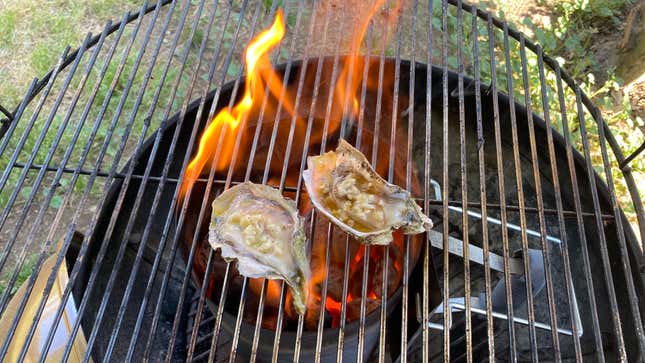
Flare ups are good. You want flare ups.Photo: Claire Lower
According to Meathead, the blue-ish, almost colorless heat coming out of the chimney can get as hot at 800℉ (he checked it with an infrared thermometer), much hotter than the temps you usually get in a simple charcoal setup, and closer to those in a professional kitchen. The supercharged heat superchars the oysters, quickly cooking them to give them a smoky, deeply browned flavor, without obscuring their briny, oceanic qualities.
How to set up your chimney for oyster grilling
You have to reconfigure things a little bit, but it’s not a big deal. Remove the grilling grate from your charcoal grill. Grab your chimney and fill it with charcoal, then light a fuel cube on your charcoal grate and set the chimney over it. Let the the chimney do its thing until the top coals have just ashed over and are glowing. Set your grilling grate over the top of the chimney. You can also use a wire rack, but you’ll want to make sure it’s uncoated and made of something sturdy that won’t warp. (A wire rack was fine for a few quick veggies, but the oysters need a little longer.)
Now you’re ready for the oysters.
How to prepare your oysters for the grill

Photo: Claire Lower
Buy your oysters day-of and keep them on ice, in the fridge, until you’re ready to toss them on the grill. Most seafood counters will pack the oysters in ice for you when you buy them, but keep an eye on it and replenish if it melts.
My closest grocery store sells oysters pre-shucked, but if yours doesn’t, you’ll have to shuck them. When doing so, make sure to keep the oyster attached to the more concave side of the shell, otherwise it might slide into the fiery pits of your chimney. (I messed this up with the oyster in the center of the back row, and had to give it to my boyfriend to eat. He was not mad.)
Make the garlic butter
You do not have to go the Drago’s route, but I highly suggest it. The combination of butter, garlic, and seafood is a classic for a reason, and widely available for easy sourcing. The Spruce Eats had already published a Drago’s-approved recipe, so I used that. The only edit I would make is saving the fresh pepper until after the grilling, as its flavor gets pretty much obliterated by the high-heat cooking.
To make the butter, finely—and I mean finely—mince six cloves of garlic. Big chunks won’t have time to soften on the grill, so get them itty-bitty and gently warm them in a stick of melted butter in a small pot on the stove to temper the harsh bite. Or, if you like the aggressive sting of fresh garlic, keep the mince kind of large, then stir the garlic into just-melted butter and go. (My garlic pieces were a bit on the thick side for my taste, but my Italian boyfriend thought they were perfect. Do with that what you will.)
Get to grillin’

Photo: Claire Lower
This recipe is a little dangerous. Not only does the chimney reach temperatures of nearly 800 degrees, but the butter will drip down and flare (a good thing), and the oysters (which are full of water) can pop and splatter. As soon as your oyster is on the grate and doused with butter, step back and stay away for a few minutes until the action dies down, and try to keep the area free of children and pets.
The oysters are done when their shells are deeply charred on the edges, the body of the oyster has puffed up in the center, and the edges of the oyster have curled up. This takes three to five minutes.
Once they’re done, (carefully) remove them from the grill and finish them with a little more butter and a few pinches of cheese. Drago’s recommends a blend of parm and pecorino, so that’s what I used and also what I recommend. Add a sprinkle of parsley too; leafy greens are important. Serve with bread for soaking up excess oyster butter; that’s even more important than leafy greens.
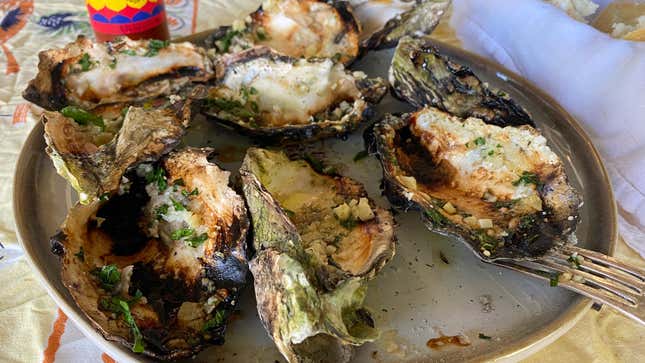
Photo: Claire Lower
Chimney-Broiled Oysters
Ingredients:
1 stick (1/2 cup salted butter)6 cloves garlic, finely minced2 pinches dried oregano12 oysters, freshly shucked 1 ounce grated parmesan1 ounce grated pecorinoFresh pepper1 tablespoon chopped parsleyRemove the grill grate from your grill. Fill a charcoal chimney with coals and set it over a lit fuel cube on the charcoal grate. Let the chimney do its thing for about half an hour, until the coals are just ashed over and white hot.
In the meantime, melt the butter over the stove on medium-low heat, then add the garlic and let it soften, but not brown, while the charcoal heats. This is also a good time to make sure your oysters are shucked and ready to go. Mix the two cheeses together and set them aside.
Once the coals are ready, set your grill grate (or a mini grill grate) over the chimney, and place 2-4 oysters over the coals. Spoon butter on the oysters, and be liberal with it, you want to create butter flare ups to help build that charbroiled flavor. Cook for 3-5 minutes, until the centers of the oysters puff and the edges curl. Carefully remove them with tongs, spoon a little more butter on top, then immediately sprinkle a few generous pinches of the cheese blend on top. Season with fresh pepper and garnish with chopped parsley, then repeat until you are out of oysters.
Serve with bread for butter mopping, along with a few lemon wedges and a bottle of Louisiana hot sauce, if you are so inclined. Wash it down with a crisp chardonnay if you want the full, Claire’s Dad-approved Drago’s experience.

 Hollif
Hollif 







